-
Smartsheet: Best for multiple projects
-
monday work management: Best for complex projects
-
ClickUp: Best for Agile project management
-
Airtable: Best for customization
-
Asana: Best for scalability
-
Celoxis: Best for advanced project management tools
Project managers and project leads in large organizations often need to handle complex projects, which may require cross-functional cooperation and communication. The right project management software provides the flexibility to manage larger enterprise teams.
We have narrowed our list to the six top software to help you pick out the best project management software for your large enterprise team. We also share the benefits of using such software, key features to consider and our methodology.
Top project management software for larger enterprise teams software comparison
This table compares the best project management software for larger enterprise teams.
| Software | Unified communication | Workflow automations | Resource management | Mobile app | Demo or free trial |
|---|---|---|---|---|---|
| Smartsheet | Yes | Yes | Yes | Yes | Yes |
| monday work management | Yes | Yes | Yes | Yes | Yes |
| ClickUp | Yes | Yes | Yes | Yes | Yes |
| Airtable | Yes | Yes | Yes | Yes | Yes |
| Asana | Yes | Yes | Yes | Yes | Yes |
| Celoxis | Yes | Yes | Yes | No | Yes |
Featured partners
Jump to:
- What are the benefits of enterprise project management software?
- Key features of project management software for large enterprise teams
- Review methodology
- How do I choose the best project management software for large enterprise teams?
Smartsheet: Best for multiple projects
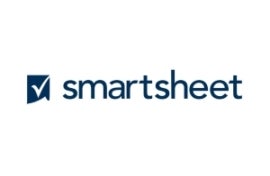
Smartsheet is a powerful project management software that can help larger enterprise teams be more productive, plan more effectively and deliver projects faster. The spreadsheet-style interface keeps data organized, making Smartsheet an ideal platform for managing multiple projects.
Users with experience with spreadsheets would find it easy to start using Smartsheet. The best features of Smartsheet include its powerful reporting and analytics, team collaboration tools and robust automation features.
Pricing
Large enterprise teams will likely want to consider Smartsheet’s Enterprise plan, which offers several additional features unavailable with the lower-priced tiers. These include single sign-on, Enterprise plan manager, custom email domains, unlimited attachment storage and more. Those interested will need to contact Smartsheet’s sales team for information on features and pricing.
However, if you think your enterprise team still isn’t large enough for an Enterprise plan, Smartsheet readily offers pricing information for its other tiers:
- Free plan: No cost for one user and two editors.
- Pro: $7 per user per month, billed annually, or $9 per user billed monthly.
- Business: $25 per user per month, billed annually, or $32 per user billed monthly.
Features
- Smartsheet templates: With over 350 templates, you can choose to be up and running quickly with Smartsheet. As an added advantage, you get plenty of templates for Agile project management.
- Data security: As an enterprise-level software, Smartsheet offers several security features, including SSO, data encryption, secure data centers and advanced controls for user access.
Pros
- Robust data protection and compliance tools.
- Powerful analytics and reporting.
Cons
- No kanban views.
- Steep learning curve for users not familiar with spreadsheets.
For more information, read the full Smartsheet review.
monday work management: Best for complex projects
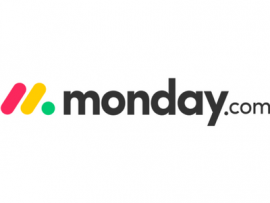
monday work management software simplifies how large enterprise teams work together by offering tools to optimize business processes in one central platform. It offers an intuitive and highly visual user interface, customizable tools and team collaboration tools.
Enterprise teams will also appreciate monday’s robust security features and compliance, including its GDPR compliance and ISO certification.
Pricing
monday work management’s Enterprise plan is ideal for large enterprise teams looking for a project management tool. With this plan, enterprise teams can get premium support, SSO, 1,000GB storage, 250,000 automations per month, tailored onboarding, advanced reporting and other features. They’ll need to contact the sales team for a custom quote.
monday work management is available in several other pricing tiers as well:
- Free: No cost for up to two seats.
- Basic: $8 per user per month, billed annually, or $10 per user billed monthly.
- Standard: $10 per user per month, billed annually, or $12 per user billed monthly.
- Pro: $16 per user per month, billed annually, or $20 per user billed monthly.
Features
- Project automation: With large enterprise teams, several tasks are recurring, some of which can be automated using monday work management tools. This includes sending notifications, assigning due dates and dependency triggers.
- Deep and extensive integrations: monday work management integrates with hundreds of third-party business applications, including other project management software, customer relationship management tools, communication applications, online storage and more.
Pros
- Highly customizable.
- Powerful automation tools.
- Integration capabilities with an extensive list of business applications.
Cons
- Customer service is slow.
- Time tracking is only available in the Pro account.
For more information, read the full monday Work OS review.
ClickUp: Best for Agile project management
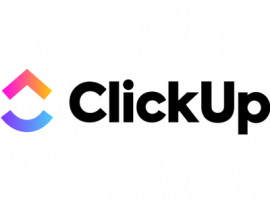
For large businesses or enterprises that rely on Agile project management or need customizable project views, ClickUp is an excellent choice. The software offers a good balance of usability and functionality. You get plenty of team collaboration and productivity tools, and you customize the software to meet your business needs.
Pricing
Large enterprise teams can take advantage of the additional features available with the ClickUp Enterprise model. These features include white labeling, SSO, advanced permissions, unlimited custom roles, a dedicated success manager, live onboarding training and more. Enterprise teams interested should contact ClickUp’s sales team for more information on pricing.
ClickUp also offers several other pricing tiers for those still not ready for the Enterprise plan:
- Free: No cost for unlimited Free plan members.
- Unlimited: $5 per person per month, billed annually, or $9 per person billed monthly.
- Business: $12 per person per month, billed annually, or $19 per person billed monthly.
- Business Plus: $19 per person per month, billed annually, or $29 per person billed monthly.
Features
- Real-time reporting: Project managers and project leads will appreciate the real-time reporting capabilities of ClickUp. They can use this feature to create and customize reports to gain insights into their team’s performance.
- Project views: ClickUp offers over 15 project views, including a list view, board view, Gantt charts, calendars and a mind map view.
Pros
- Unlimited storage in premium plans.
- Plenty of user interface customization options.
- Suitable for complex projects.
Cons
- ClickUp’s steep learning curve requires onboarding.
- Time tracking is only available in higher-priced plans.
For more information, read the full ClickUp review.
Airtable: Best for customization

Airtable offers an efficient way to manage projects for large enterprise teams. With its team collaboration tools, integration capabilities and multiple project views, large teams get all of the tools they need to manage enterprise-level projects. The unique selling point of Airtable is that it excels in customization, as teams can tailor this software to meet their needs.
Pricing
Airtable’s Enterprise model includes SSO, 1,000GB attachments per base, unlimited extensions, SSO, advanced interface tools, Salesforce and Jira on-premises sync integration, and other features. Large enterprise teams interested will need to contact sales for a custom quote.
For teams not quite ready for the Enterprise plan or those wanting to see what all capabilities Airtable has to offer, the platform has several other pricing tiers for consideration:
- Free: Unlimited bases for up to five users and unlimited commenter and read-only users.
- Plus: $10 per user per month, billed annually, or $12 per user billed monthly.
- Pro: $20 per user per month, billed annually, or $24 per user billed monthly.
Features
- Drag-and-drop functionality: In the Airtable kanban board or gallery views, users can simply drag and drop tasks to view or modify them. The gallery views offer more structure, while the kanban boards offer a quick way to update task status.
- Importing existing projects: In Airtable, users can import an existing project into the application by pasting cell data from spreadsheet software for uploading a CSV file.
Pros
- Powerful customization capabilities.
- Large selection of templates.
Cons
- Steep learning curve.
- Limited automation.
For more information, read the full Airtable review.
Asana: Best for scalability
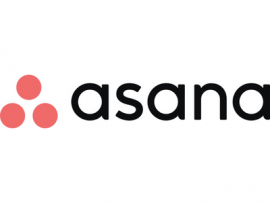
Asana is one of the few project management software that is suitable for businesses of all sizes, ranging from small businesses to large enterprises. The scalability offered by Asana makes it ideal for companies that are growing.
The advanced project management features, such as custom branding, audit log application programming interface, mass data export and service accounts, are best suited for enterprise-level teams.
Pricing
At the Enterprise level, large enterprise teams get access to priority support, custom branding, SAML, attachment control, advanced data export tools and more. Each plan is customized per organization by Asana’s sales team.
Other pricing tiers offered by Asana include:
- Basic: No cost for unlimited tasks, projects, messages, activity logs and file storage.
- Premium: $10.99 per user per month, billed annually, or $13.49 per user billed monthly.
- Business: $24.99 per user per month, billed annually, or $30.49 per user billed monthly.
Features
- Importing existing project data: Using Asana, team members can import existing project data into the application and start working from where they left off. Of course, members will need the import file in the correct format, but uploading it into the system is a straightforward task.
- Custom controls: You get plenty of custom controls to manage more complex projects. This includes settings values for project data inputs, such as task dependencies.
Pros
- Variety of import options.
- Access to an extensive list of third-party applications.
- Ability to create and manage workflows for larger enterprise teams.
Cons
- User interface is a bit clunky.
- Steep learning curve, especially for more advanced features.
For more information, read the full Asana review.
Celoxis: Best for advanced project management tools
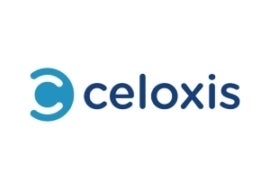
Celoxis is a complete enterprise project portfolio management solution that offers advanced project management features, including adjusting project schedules and forecasting revenue. Decision-makers at large businesses or enterprises will enjoy using Celoxis, as it is designed to provide high-level visibility and reports.
Pricing
Celoxis pricing isn’t separated by tier, rather by the length of the contract and whether organizations need to deploy in the cloud or on-premises.
Cloud pricing:
- Monthly: $25 per user per month.
- Yearly: $22.50 per user per month.
- 2-Yearly: $21.25 per user per month.
- 3-Yearly: $20 per user per month.
Large enterprise teams considering an on-premises deployment will need to contact Celoxis’ sales teams for a custom quote.
Features
- Built-in budgeting: The Celoxis budgeting tools help project managers monitor project budgets, including the costs of specific tasks.
- Advanced resource planning: Celoxis offers real-time reporting, so project managers can know who is working on what and allocate responsibilities based on project demands.
Pros
- Excellent reports and analytics for decision makers.
- Easy and quick setup.
Cons
- No free version.
- Limited collaboration tools.
See how Celoxis compares to our list of the top 10 project management software.
What are the benefits of enterprise project management software?
The key benefits for organizations that use enterprise project management software include:
- Increased efficiency: The team’s efficiency is boosted by the ability of software to offer reporting and analytics, team collaboration tools and other innovative features.
- Reduced costs: The reduced costs are achieved by eliminating redundant work, unnecessary overtime and other avoidable expenses.
- Better visibility: Project managers and project leads get better visibility for the entire project life cycle.
- Better project outcomes: Overall increased efficiency, better visibility and reduced costs lead to better project outcomes and greater likelihood of project success.
Key features of project management software for large enterprise teams
Kanban boards
Kanban boards are components of Agile project management. They are designed to help project managers visualize work-in-progress. This feature is particularly vital for larger enterprise teams, as they often deal with more complex projects.
Scrum support
Several large businesses and enterprises use scrum to help teams deliver greater value by concentrating on smaller goals and integrating those goals into the primary goals for the project.
Gantt charts
A Gantt chart is an important tool for project management, as it illustrates the progress of a project in terms of a planned schedule. Gantt charts can include milestones, deadlines and task dependencies to provide more insight into the project.
Mobile app
Having a mobile app for project management software is helpful for enterprise-level teams, as they can perform some tasks even when they are away from a computer or not in the office. This helps minimize delays and keep everyone aligned on the project’s progress.
Time tracking
Time tracking tools help keep large enterprise teams on schedule for the project as well as help them understand how they have allocated resources and if there is a better way to use them. Time tracking also helps assess the effectiveness of large enterprise teams and the accuracy of their work estimates.
Review methodology
To choose the best project management software for larger enterprise teams, we focused on features that are important to large businesses or enterprises. This includes tools for automation, team collaboration, reporting and analytics. We looked at the software’s core features, such as project views and time tracking capabilities, as well.
The strengths and weaknesses of each software were analyzed to compile this list. And the pricing structure was considered to ensure the software offers good value for money.
How do I choose the best project management software for large enterprise teams?
There are a lot of features to consider when choosing the best project management software for a large enterprise team. Enterprise-level teams often need software that is collaborative and customizable. Most essential features include enterprise portfolio management tools, workflow automation and resource management tools.
As a starting point, you can narrow down the features based on your priority. For example, if you want to minimize disruption to your operations, consider software with a quick and easy setup and an easy learning curve. Remember that ease of use is often a trade-off with functionality, so you might not have access to advanced project management tools if you choose to use simple software.
This page can help you get started; however, to make a final decision, it is best to schedule a detailed product demo with the software vendor. In some cases, you’ll have to use the free trial for more than one software to make a final decision.
Read next: Not quite sure an enterprise-level plan is right for you? Check out our list of the best portfolio project management software.











